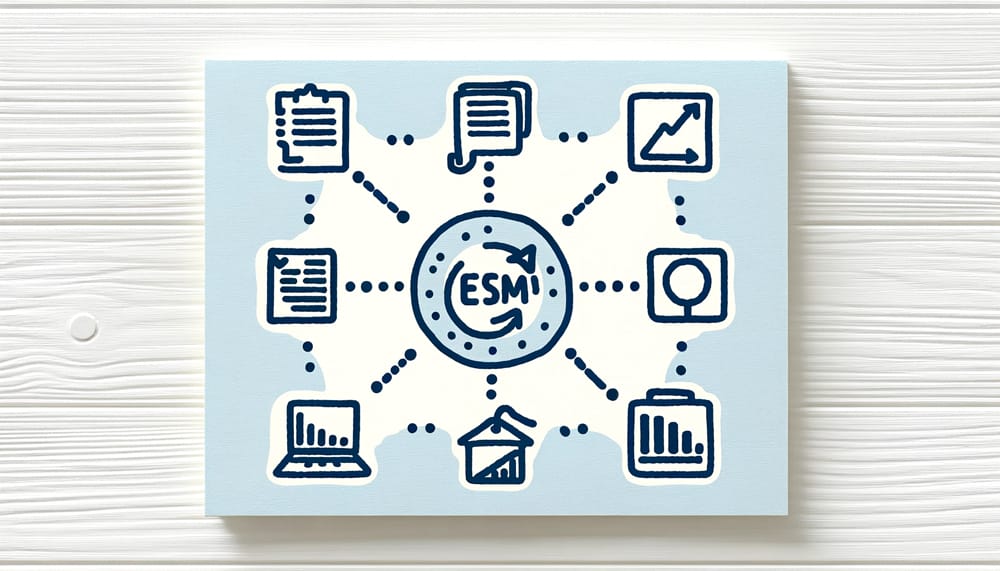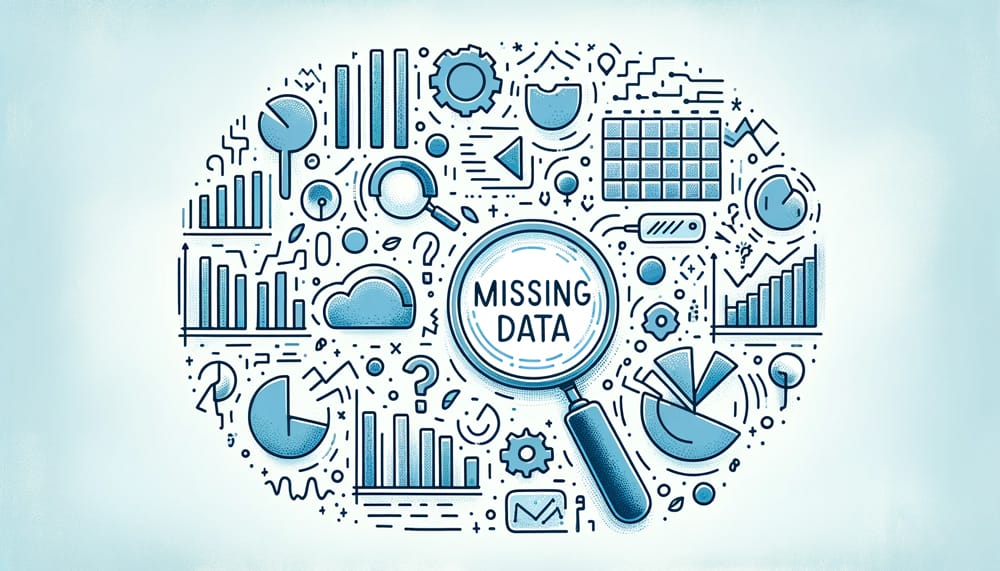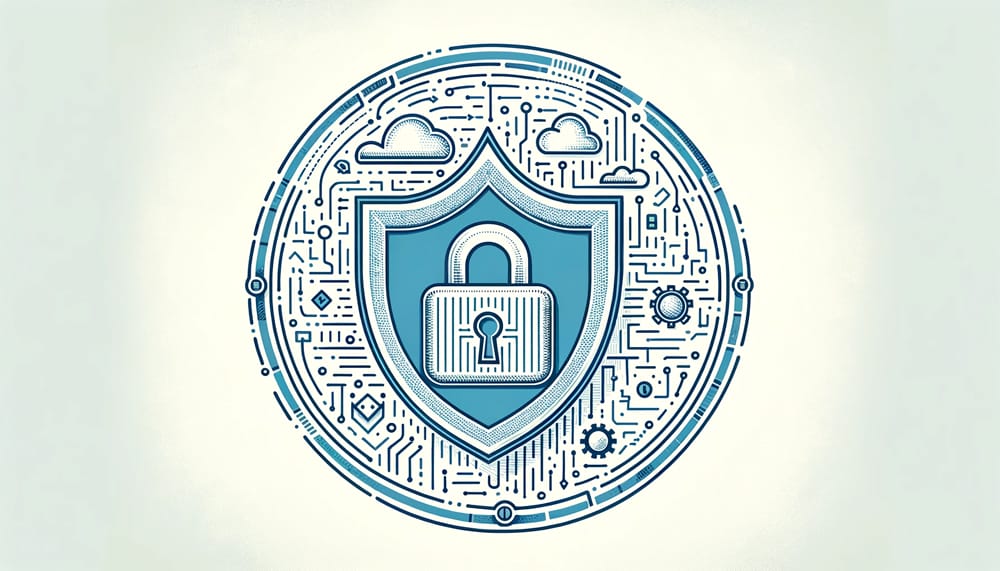Introduction to Challenges in ESM
Experience Sampling Method (ESM) research, with its unique approach to capturing real-time data, presents a set of distinct challenges that researchers must navigate. Understanding and addressing these obstacles is essential to ensure the success and integrity of an ESM study. For further insights into the foundational aspects of ESM, Introduction to Experience Sampling Method (ESM) provides a comprehensive overview.
Overview of Common Obstacles in ESM Research
ESM research typically involves collecting data multiple times over a set period, which can pose several challenges:
- Participant Fatigue: Due to the frequent and repetitive nature of data collection in ESM studies, participant fatigue is a common issue. This can lead to reduced response rates or less accurate data over time, impacting the study’s overall quality. Incorporating strategies from resources like Participant Engagement in ESM Studies can provide additional insights into how to engage a wide range of participants, even within the constraints of convenience sampling.
- Data Inconsistency: Ensuring consistent data quality throughout the duration of the study can be challenging. Factors like participant variability, changes in environment, and the subjective nature of self-reporting can contribute to data inconsistency. For more detailed methodologies on adjusting frequency and timing in ESM, Analyzing ESM Data: A Step-by-Step Guide can be a valuable resource.
- Technological Barriers: ESM often relies on digital tools for data collection, such as smartphone apps or wearable devices. Technical issues, compatibility problems, or user errors can pose significant barriers to effective data collection. For a comprehensive understanding of the latest technological
- innovations in ESM, resources like Technological Innovations in ESM Data Collection offer in-depth information and insights. ESM Data Collection offer in-depth information and insights.
- Low Response Rates: Achieving a high response rate is crucial for the validity of ESM research. However, participant engagement can wane over time, leading to lower response rates and gaps in data.
- Ethical Considerations: Protecting participant privacy and ensuring ethical data handling are paramount in ESM research, given the personal and sometimes sensitive nature of the data collected. Ensuring the privacy and confidentiality of participant data, as highlighted in Ethical Considerations in ESM Research.
Importance of Addressing These Challenges for Study Success

-
- Ensuring Data Quality and Reliability: Overcoming these challenges is crucial for maintaining the quality and reliability of the data collected. High-quality data is essential for drawing accurate and valid conclusions from the study.
-
- Ethical Compliance: Addressing challenges, especially those related to ethics and participant engagement, is vital for upholding the ethical standards of research and ensuring participant welfare.
-
- Study Viability and Impact: Successfully navigating these obstacles enhances the overall viability of the study and ensures that its findings can significantly contribute to the field. As outlined in resources like Improving Compliance in ESM Data Collection, tackling these challenges head-on is key to the success of an ESM study.
“In the realm of ESM research, each challenge presents an opportunity to innovate and refine methodologies, thereby enhancing the robustness and impact of the study’s findings.”
Recognizing and proactively addressing these challenges is an integral part of conducting effective and impactful ESM research. As we explore specific challenges and their solutions in the following sections, researchers can gain insights into best practices for successful ESM study execution.
Participant Fatigue and Its Mitigation in ESM Research

Participant fatigue in Experience Sampling Method (ESM) studies can significantly impact data quality and response rates. Understanding the signs and causes of fatigue and implementing effective strategies to mitigate it are crucial for maintaining participant engagement and ensuring the success of an ESM study.
Identifying Signs and Causes of Participant Fatigue
-
- Decreased Response Rates: A noticeable drop in response rates over time can be a clear sign of participant fatigue. This trend might indicate that participants are feeling overwhelmed or disinterested in the study.
-
- Reduced Data Quality: If responses become shorter, less detailed, or more generic, it might suggest that participants are experiencing fatigue. Inconsistent or contradictory responses can also be indicative of this issue.
-
- Common Causes: Frequent and repetitive data collection, inherent in ESM methodology, often leads to fatigue. The perceived burden of responding to multiple prompts throughout the day can be taxing for participants, as discussed in Improving Compliance in ESM Data Collection. Personal factors, such as a participant’s lifestyle or current stress levels, can also contribute to fatigue, particularly in studies involving sensitive topics.
Strategies for Reducing Fatigue and Maintaining Engagement
-
- Optimizing Prompt Frequency: Adjust the frequency of ESM prompts to reduce the perceived burden. Finding the right balance is key; too few prompts might lead to insufficient data, while too many can cause fatigue.
-
- Personalization of ESM Experience: Allow participants some level of control over their participation, such as choosing when to respond to prompts or selecting preferred time windows for data collection. This sense of control can enhance engagement, as highlighted in Participant Engagement in ESM Studies.
-
- Incorporating Varied Prompt Types: Use a variety of prompt types to maintain interest. For instance, alternating between simple scale-based questions and open-ended prompts can keep the experience engaging for participants.
-
- Transparent Communication and Support: Maintain open communication with participants, explaining the importance of their consistent participation and offering support if they encounter difficulties. This approach fosters a sense of collaboration and purpose.
-
- Offering Incentives: Consider providing incentives for continued participation, especially in longer studies. Incentives should be ethical and appropriate to the study’s context.
-
- Regular Check-Ins and Feedback: Implement regular check-ins with participants to gauge their experience and provide feedback on their contributions. Recognizing participant efforts can enhance motivation and reduce fatigue.
“Addressing participant fatigue in ESM research is not just about maintaining data quality; it’s about respecting and valuing the time and effort of the participants, ensuring a mutually beneficial research process.”
Mitigating participant fatigue is a critical aspect of conducting successful ESM research. By implementing these strategies, researchers can maintain high levels of engagement and data quality throughout the study, ultimately enhancing the study’s reliability and impact.
Dealing with Data Inconsistency in ESM Research

Data inconsistency in Experience Sampling Method (ESM) research can pose significant challenges, affecting the validity and reliability of the findings. Understanding the causes of these inconsistencies and implementing methods to ensure uniform data collection are key to maintaining the integrity of ESM studies.
Causes of Data Inconsistency in ESM
-
- Participant Variability: Individual differences among participants, such as varying interpretations of questions or fluctuating engagement levels, can lead to inconsistencies in responses. This variability is particularly evident in studies with diverse participant groups.
-
- Environmental and Contextual Factors: Changes in participants’ environments or daily routines can impact the consistency of their responses. For instance, workplace dynamics or external stressors could influence how participants respond to ESM prompts.
-
- Methodological Limitations: The design of the ESM study itself, such as the frequency and timing of prompts, can contribute to data inconsistency. Misalignment with participants’ daily schedules can lead to rushed or missed responses.
Methods for Ensuring Consistent Data Collection
-
- Standardizing ESM Procedures: Implement standardized procedures for ESM data collection, ensuring that all participants receive the same instructions and prompts. This approach, outlined in Designing an ESM Study: Key Considerations, helps reduce variability in responses.
-
- Training and Clear Instructions: Provide comprehensive training and clear instructions to participants. Ensuring that participants fully understand how to respond to ESM prompts can reduce inconsistencies, as highlighted in Setting up ESM Data Collection.
-
- Adapting to Participant Routines: Tailor the ESM schedule to fit participants’ daily routines, reducing the likelihood of rushed or missed responses. Customizing the timing of prompts can enhance the consistency of data collection.
-
- Utilizing Technological Solutions: Leverage technology to minimize inconsistencies. Automated systems and reminders can help ensure that participants respond to prompts regularly and accurately, as seen in Technological Innovations in ESM.
-
- Regular Data Quality Checks: Conduct regular checks on the data collected to identify and address inconsistencies early. This practice, essential for maintaining data quality, is discussed in Analyzing ESM Data: A Guide.
-
- Feedback Mechanisms: Implement feedback mechanisms where participants can report any issues or challenges they face in responding to prompts. Addressing these issues promptly can enhance data consistency.
“Ensuring data consistency in ESM research is a dynamic process that requires a blend of methodological precision, participant engagement, and adaptive strategies.”
By addressing the causes of data inconsistency and implementing these methods, ESM researchers can significantly enhance the quality and reliability of their data. Consistent data collection is fundamental to the success of ESM studies, enabling researchers to draw accurate and meaningful conclusions.
Overcoming Technological Barriers in ESM Research

In Experience Sampling Method (ESM) research, technology plays a crucial role in data collection. However, technological barriers can hinder the process, affecting the quality and efficiency of the study. Addressing these tech-related issues is essential for the smooth execution of ESM studies.
Addressing Common Tech-Related Issues in ESM Studies
-
- Device Compatibility and Accessibility: One common issue is the compatibility of ESM applications with participants’ devices. Ensuring that the ESM software or app is accessible across various platforms and devices is crucial.
-
- Technical Glitches and User Errors: Technical glitches, such as app crashes or data synchronization errors, can lead to data loss or inconsistency. User errors, such as incorrect data entry, also pose challenges. Regular technical support and troubleshooting guides, as suggested in Technological Innovations in ESM, can mitigate these issues.
-
- Data Security and Privacy Concerns: Ensuring the security and privacy of the data collected via technology is paramount, especially given the personal nature of ESM data. Concerns about data breaches or unauthorized access can deter participant cooperation. Implementing robust security protocols, as emphasized in Ethical Considerations in ESM Research, is essential for building trust with participants.
Solutions for Navigating Technological Challenges
-
- User-Friendly Design: Design ESM tools that are intuitive and easy to use. A user-friendly interface can reduce the likelihood of user errors and improve participant compliance. In Participant Engagement in ESM Studies, the significance of an engaging and straightforward user experience is highlighted.
-
- Cross-Platform Functionality: Develop or choose ESM tools that function seamlessly across various operating systems and devices. This approach ensures broader accessibility and reduces compatibility issues.
-
- Regular Software Updates and Testing: Conduct regular updates and testing of the ESM software to address bugs and improve functionality. This proactive approach can prevent many technical issues from arising. As discussed in Setting up ESM Data Collection, preparing for and addressing technical issues in advance is critical.
-
- Training and Support for Participants: Provide comprehensive training and ongoing technical support to participants. Clear instructions and accessible support can alleviate many tech-related challenges in ESM research.
-
- Data Encryption and Secure Storage: Implement strong encryption methods for data transmission and secure storage solutions to protect participant data. Transparency about these measures can reassure participants about their data’s safety.
“Navigating technological barriers in ESM research requires a blend of user-centric design, proactive technical support, and stringent security measures, ensuring that technology enhances rather than hinders the research process.”
By effectively addressing these technological barriers and implementing these solutions, ESM researchers can ensure that technology serves as a reliable and efficient tool in their studies, enhancing the overall quality and reliability of the research.
Responding to Low Response Rates in ESM Research

Low response rates in Experience Sampling Method (ESM) studies can significantly impact the quality and reliability of the data collected. Understanding and addressing the factors contributing to low response rates are crucial for the success of ESM research.
Analyzing Factors Contributing to Low Response Rates
-
- Participant Engagement Issues: A lack of motivation or interest in the study can lead to low response rates. This might be due to a disconnect between the study’s objectives and the participants’ interests or perceived lack of relevance, as discussed in Participant Engagement in ESM Studies.
-
- Burden of Participation: The perceived burden of participation, including the frequency and timing of ESM prompts, can deter participants. If the ESM tasks are seen as too time-consuming or intrusive, participants may be less likely to respond consistently, as noted in Improving Compliance in ESM Data Collection.
-
- Technological Challenges: Technical issues, such as difficulties with the ESM app or platform, can also contribute to low response rates. Ensuring technological accessibility and functionality is essential, as highlighted in Technological Innovations in ESM.
Tactics for Improving Participant Response
-
- Enhancing Engagement Through Personalization: Personalize the ESM experience by allowing participants to choose response times or customize aspects of the data collection process. This approach can make the study more participant-friendly and increase engagement.
-
- Reducing Participant Burden: Adjust the frequency and timing of ESM prompts to reduce the perceived burden. Offering flexible response options and minimizing the length of each ESM interaction can make participation less daunting.
-
- Incentives and Motivation: Providing appropriate incentives can motivate participants to respond more consistently. These incentives should be ethical and proportional to the level of participation required.
-
- Clear Communication and Support: Maintain open and regular communication with participants, offering support and feedback. Informing participants about the importance of their responses and how their data contributes to the study can enhance motivation.
-
- Utilizing Reminders and Notifications: Implementing timely reminders or notifications can help in keeping the study at the forefront of participants’ minds. However, it’s important to balance this with the risk of prompting fatigue.
-
- Ongoing Technical Support: Provide readily accessible technical support to address any issues participants face with the ESM tools. Quick resolution of technical problems can prevent drops in response rates.
“Addressing low response rates in ESM research is a multifaceted endeavor, requiring a combination of strategic modifications, enhanced participant support, and continuous engagement efforts.”
By implementing these tactics, researchers can effectively respond to and mitigate the issue of low response rates in ESM studies. Improving participant response not only enhances the data quality but also ensures the study’s findings are representative and reliable.
Handling Missing Data in ESM Research

Missing data is a common issue in Experience Sampling Method (ESM) research and can significantly affect the study’s outcomes. Effective strategies for handling and compensating for missing data are essential to maintain the integrity and validity of the research findings.
Approaches for Dealing with Missing Data in ESM
-
- Preventative Measures: Implementing strategies to minimize missing data from the outset is crucial. This includes optimizing the ESM design to reduce participant burden, enhancing engagement, and providing clear instructions, as discussed in Improving Compliance in ESM Data Collection.
-
- Understanding the Nature of Missing Data: Analyze the pattern and nature of the missing data. Determine if the data is missing at random (MAR), completely at random (MCAR), or not at random (MNAR). This understanding is crucial for selecting the appropriate imputation method, a topic explored in Analyzing ESM Data: A Guide.
-
- Regular Monitoring: Regularly monitor data collection to quickly identify and address issues leading to missing data. Explore essential strategies for dealing with missing data in ESM studies in our detailed guide, Handling Missing Data in Experience Sampling Method (ESM) Research: Best Practices, where we cover best practices and effective approaches.
Techniques for Data Imputation and Analysis
-
- Simple Imputation Methods: For MCAR or MAR data, simple imputation methods like mean or median substitution can be used. However, these methods should be used cautiously as they can potentially skew the data.
-
- Advanced Imputation Techniques: More sophisticated techniques like multiple imputation or model-based methods can provide better results, especially when the missing data pattern is complex. These methods create several imputed datasets, analyze each dataset separately, and then combine the results, as noted in Challenges and Solutions in ESM Research.
-
- Utilizing Available Data: In cases where imputation is not suitable, focus on maximizing the use of available data. Techniques like pattern-mixture models or sensitivity analysis can help understand the impact of missing data on study results.
-
- Transparency in Reporting: Be transparent in reporting how missing data was handled in the study. This includes detailing the imputation methods used and the potential impact on the study’s findings, a key aspect of ethical research highlighted in Ethical Considerations in ESM Research.
“Effectively handling missing data in ESM research is not just about filling gaps; it’s about ensuring that the integrity and validity of the research findings are preserved.”
By employing these approaches and techniques, researchers can effectively address the issue of missing data in ESM studies. This ensures that the conclusions drawn from the research are based on the most complete and accurate data possible, thereby enhancing the study’s overall credibility and impact.
Ethical Considerations and Solutions in ESM Research

Ethical considerations in Experience Sampling Method (ESM) research are paramount, given the method’s invasive nature and the sensitivity of the data collected. Addressing these ethical challenges is crucial to safeguard participant rights and ensure the integrity of the research.
Ethical Challenges in ESM Research
-
- Informed Consent: Obtaining informed consent in ESM studies can be complex due to the ongoing and intensive nature of data collection. Participants must fully understand what their involvement entails, including the frequency and type of data collected. As discussed in Ethical Considerations in ESM Research, it’s vital to clearly communicate the scope and purpose of the study, ensuring participants are aware of their rights and responsibilities.
-
- Privacy Concerns: ESM often collects highly personal and real-time data, which raises significant privacy concerns. Safeguarding this data against unauthorized access or breaches is a key ethical responsibility. Studies involving sensitive topics, require stringent privacy measures to protect participant confidentiality.
-
- Data Security: Ensuring the security of the data collected, particularly when using digital platforms or applications, is essential to prevent data breaches and maintain participant trust. Implementing robust data encryption and secure storage solutions, as highlighted in Technological Innovations in ESM, is critical for protecting sensitive information.
Best Practices for Ethical Compliance and Participant Privacy
-
- Dynamic Consent Process: Adopt a dynamic consent process where participants can modify their consent choices as the study progresses. This approach respects participant autonomy and addresses the evolving nature of ESM studies. Regular check-ins and updates, as recommended in Improving Compliance in ESM Data Collection, can facilitate this process.
-
- Anonymization of Data: Anonymize data wherever possible to protect participant identity. This involves removing or encrypting identifiable information before data analysis and reporting.
-
- Transparent Data Handling and Reporting: Be transparent about how data is stored, used, and shared. Clear communication about data handling processes can alleviate participant concerns and enhance the ethical standing of the study. Reporting on the handling of sensitive data, as seen in ESM Data Visualization Techniques, should also maintain participant anonymity.
-
- Ethical Review and Compliance: Ensure that the ESM study undergoes thorough ethical review and complies with relevant data protection laws and guidelines. Staying informed about ethical standards, as emphasized in Challenges and Solutions in ESM Research, is crucial for responsible research conduct.
“Ethical considerations in ESM research are not just procedural requirements; they are fundamental to ensuring respect for participant rights and maintaining the trust and integrity that underpin successful studies.”
Adhering to these best practices for ethical compliance and participant privacy in ESM research is essential. It not only protects participants but also enhances the quality and credibility of the research, ensuring that it contributes positively and responsibly to the field.
Conclusion: Best Practices for Overcoming Challenges in ESM Research
Successfully navigating the challenges in Experience Sampling Method (ESM) research is crucial for the integrity and validity of its findings. This article has outlined key issues and their solutions, providing a roadmap for researchers to conduct robust and impactful ESM studies.
Summarizing Solutions to ESM Research Challenges
- Proactive Participant Engagement: Address participant fatigue by optimizing prompt frequency, personalizing the ESM experience, and providing appropriate incentives. Engaging participants effectively is essential for maintaining high response rates and quality data.
- Ensuring Data Consistency: Standardize ESM procedures and provide clear instructions to participants. Regular data monitoring and quality checks, as advocated in Analyzing ESM Data: A Guide, can help maintain consistency.
- Navigating Technological Barriers: Choose user-friendly, cross-platform ESM tools and provide ongoing technical support. Data security, a major concern discussed in Technological Innovations in ESM, should be a priority.
- Ethical Compliance: Uphold ethical standards in all aspects of ESM research. Transparency in data handling and prioritizing participant privacy, as emphasized in Ethical Considerations in ESM Research, are fundamental.
Final Recommendations for Successful ESM Study Execution
Implementing these best practices will not only tackle the common challenges in ESM research but also enhance the overall quality and impact of the study. Researchers should remain adaptable, continuously assess and refine their methodologies, and stay attuned to the evolving landscape of ESM research.
“In the dynamic field of ESM research, overcoming challenges is not a hurdle but a stepping stone towards achieving deeper insights and more meaningful outcomes.”
By embracing these strategies, researchers can ensure that their ESM studies are not only methodologically sound but also ethically responsible and highly informative.
You Might Also Be Interested:
Delve into our comprehensive ESM Article Collection for insightful perspectives on Experience Sampling Method (ESM).
See our article Best Tools for Experience Sampling Method in 2024 to discover the top tools in the field.
Learn how the advanced features of Fibion Insight can aid your ESM research.
Planning an ESM study? For a chat with our ESM expert, book a session with Dr. Miriam Cabrita.
Frequently asked questions about this topic
What are common participant fatigue signs in ESM research?
Common signs of participant fatigue in ESM research include a noticeable drop in response rates and reduced data quality, such as shorter or less detailed responses.
How can data inconsistency in ESM studies be addressed?
Data inconsistency in ESM studies can be addressed by standardizing procedures, providing clear participant instructions, and regularly monitoring data quality.
What technological challenges are common in ESM research?
Common technological challenges in ESM research include device compatibility issues, technical glitches, and data security and privacy concerns.
What strategies can improve low response rates in ESM studies?
Strategies to improve low response rates in ESM studies include enhancing participant engagement, reducing the perceived burden of participation, and offering incentives.
How should missing data in ESM research be handled?
Missing data in ESM research should be handled by implementing preventative measures, understanding the nature of the missing data, and using appropriate data imputation techniques.
What are key ethical considerations in ESM research?
Key ethical considerations in ESM research include obtaining informed consent, ensuring participant privacy, and maintaining data security.


 Delve into our comprehensive
Delve into our comprehensive  See our article
See our article  Learn how the advanced features of
Learn how the advanced features of  Planning an ESM study? For a chat with our ESM expert,
Planning an ESM study? For a chat with our ESM expert, 








